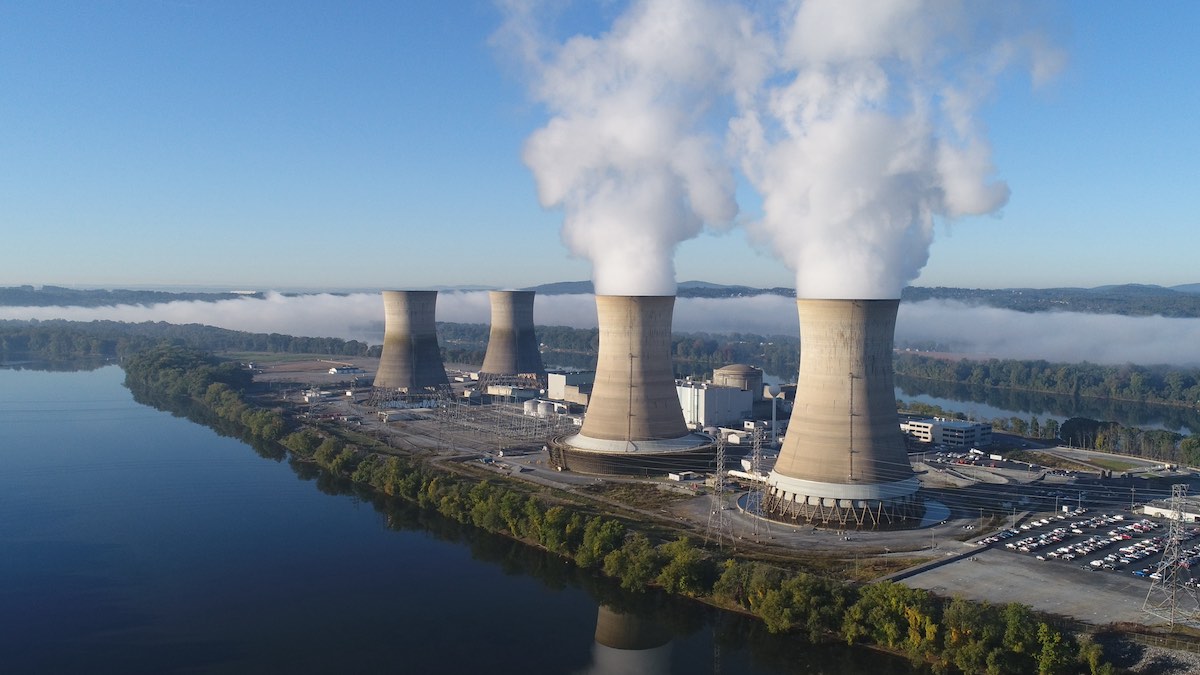

Three Mile Island. Source: Groupmesa - Own work, CC BY-SA 4.0, https://commons.wikimedia.org/w/index.php?curid=82001702
Did you hear the one about big tech going nuclear? One of the lines being trotted out in support of nuclear power by shadow energy minister Ted O’Brien – and faithfully reproduced by the Murdoch press – is that everyone’s doing it, including global tech giants Google and Microsoft.
“Not only does Labor claim to know the economics of nuclear better than companies like Microsoft who signed a massive nuclear deal, but they also think they can run the numbers better than (US banks and financiers) who have come out in favour of nuclear energy,” O’Brien said in September.
So, is it true?
Microsoft did announce, in September, a 20 year power purchase agreement with Constellation Energy to reboot one unit at the mothballed Three Mile Island nuclear power plant in Pennsylvania and rebadge it as the Crane Clean Energy Centre.
Three Mile Island was, in 1979, the site of the worst commercial nuclear power accident in US history. It was shuttered in 2019 for economic reasons, with Constellation’s then parent company Exelon Corp, saying in 2017 that its closure was due to lack of financial rescue from the state.
This is not unusual. According to TechCrunch, in the last decade, seven nuclear reactors have been decommissioned in the US, while only two new ones have been switched on.
Notwithstanding the fact that restarting a nuclear plant that has been shut down for five years has never been done before (according to reports, Constellation Energy is reportedly seeking a taxpayer-subsidised loan it hopes will save it $122 million in borrowing costs) this somewhat baffling deal is expected to supply around 850 MW.
Google, meanwhile, in October announced plans to invest in small modular reactors to meet its own growing data centre needs and Amazon followed suit, with news of “three new agreements to support the development of nuclear energy projects,” again with a focus on the the as-yet commercially unproven SMR technology.
So, yes – all three of these companies have recently announced plans to invest in nuclear power – albeit in markets where it already exists (although not in the case of SMRs) and in technology and applications that are highly speculative.
Does this mean they have come over all Team Nuclear? Hardly.
Amazon, as it bragged in October, has been the largest corporate purchaser of renewable energy in the world for four years running, according to Bloomberg NEF, having invested billions of dollars in more than 500 solar and wind projects globally, which together are capable of generating enough energy to power the equivalent of 7.6 million US homes.
Amazon met its goal of sourcing 100% of the electricity its uses with renewable energy in 2023 – seven years ahead of the 2030 target.
Google announced just this week that it was funding $US20 billion ($A31 billion) worth of renewable power projects across the US, in a deal with Intersect Power and investment fund TPG Rise Climate to develop power to drive several gigawatt-scale data centers.
Microsoft, last week, joined a US investor Acadia Infrastructure Capital and other companies to launch the Climate and Communities Investment Coalition (CCIC) to develop a $US9 billion ($A14 billion) pipeline of renewable energy projects across the country, as reported in Reuters.
On its website, Microsoft says it invested in over 23.6 million megawatt-hours of renewable energy in 2023 financial year – “enough to power Paris with renewable electricity for about two years.”
Earlier this year, the company announced plans to procure some 9.5GW of solar panels from Qcells for PPAs through 2032 – adding about 1.5GW every year. In April Microsoft revealed in a job listing that it had more than 20GW of renewable energy under contract.
A solar farm and big battery proposed for development north of Geelong has been fast-tracked…
Activist shareholder forces another global energy giant to return money to investors and double down…
Peter Dutton says he will lower the cost of gas. But will that translate into…
Ausgrid’s Marc England explains why local networks are preparing their own ISP, and discussed batteries…
Distributed networks say they can host vast amounts of wind, solar and storage capacity at…
Developer of the biggest battery yet in South Australia says the company has struggled to…